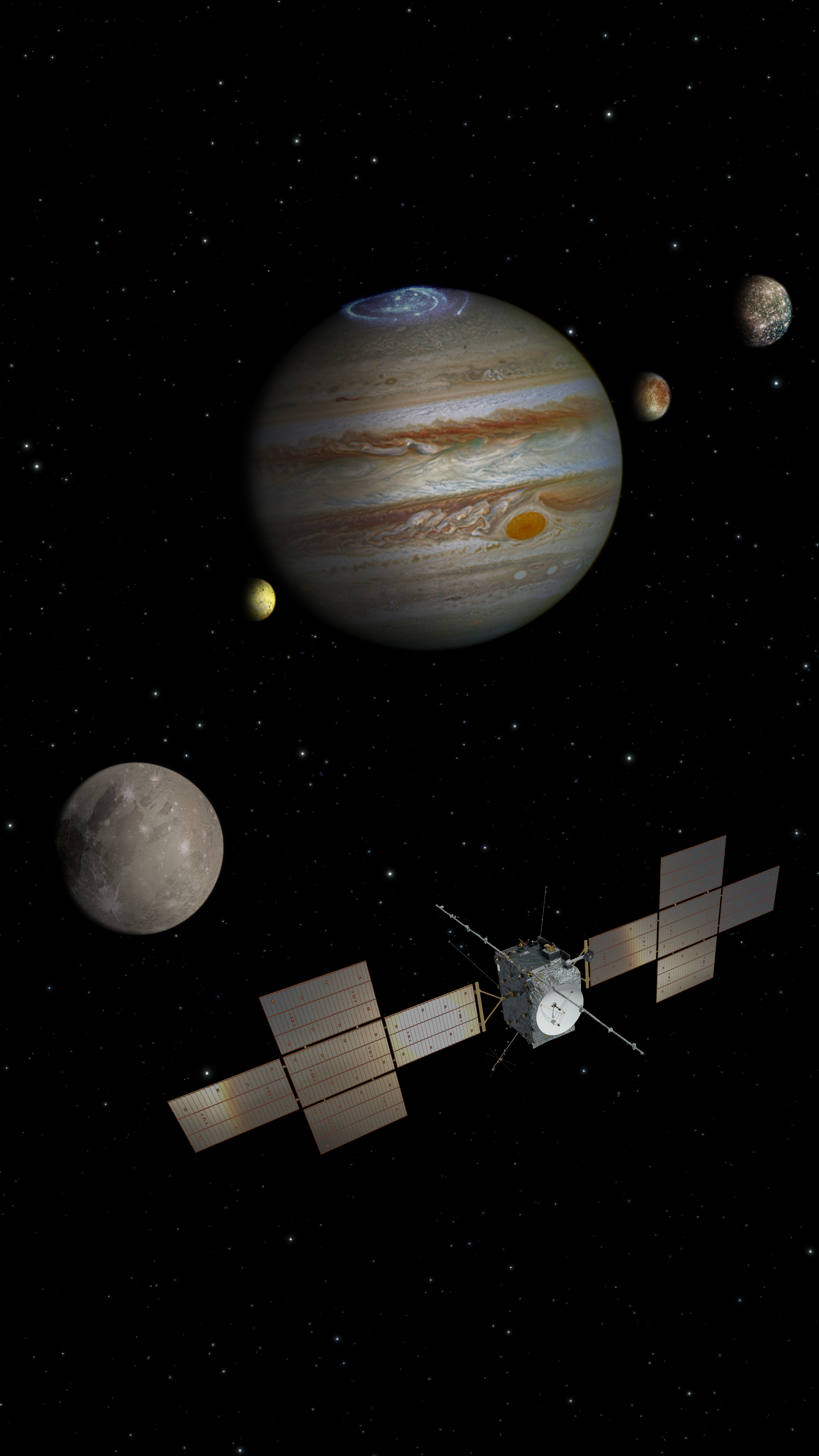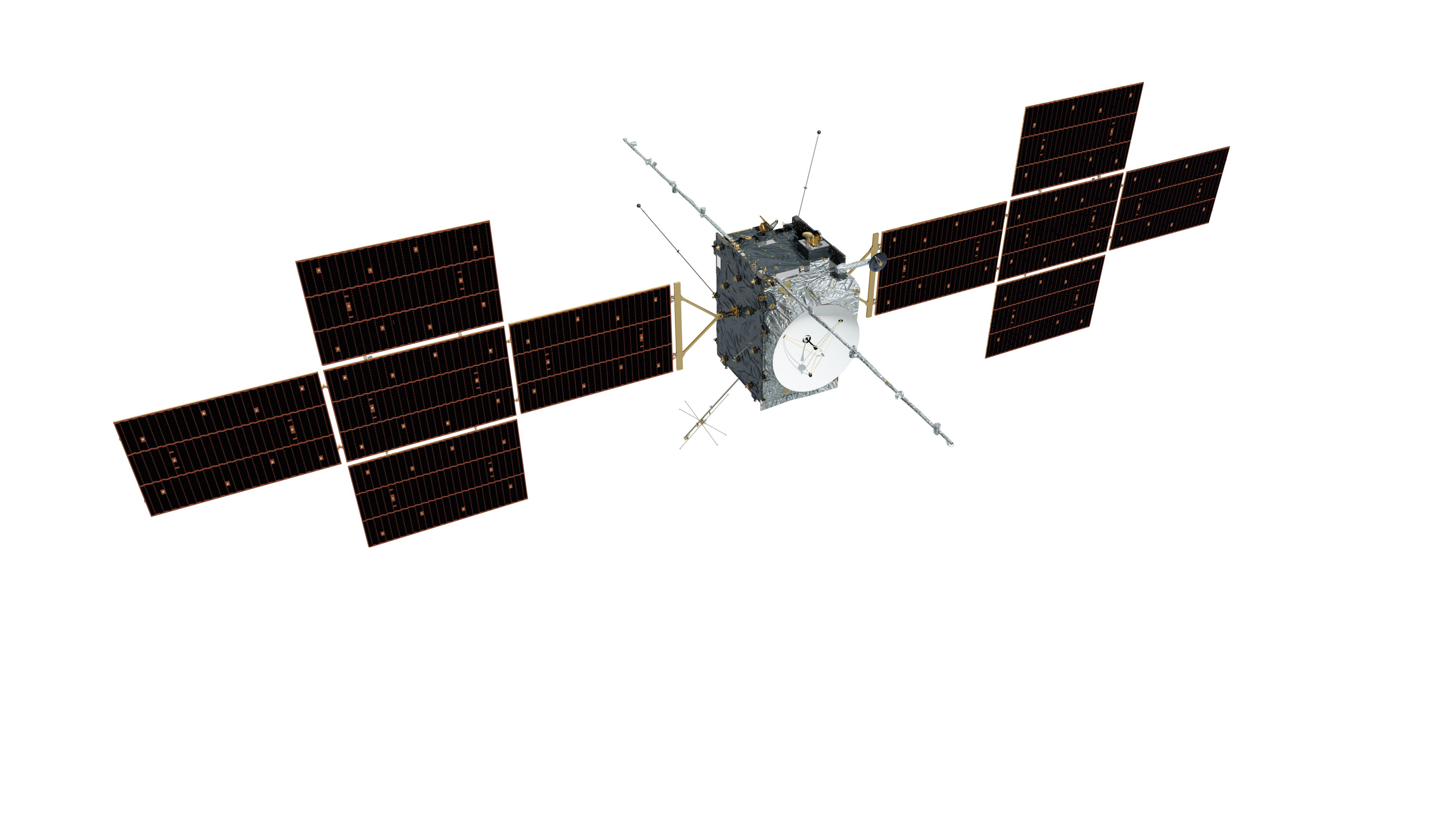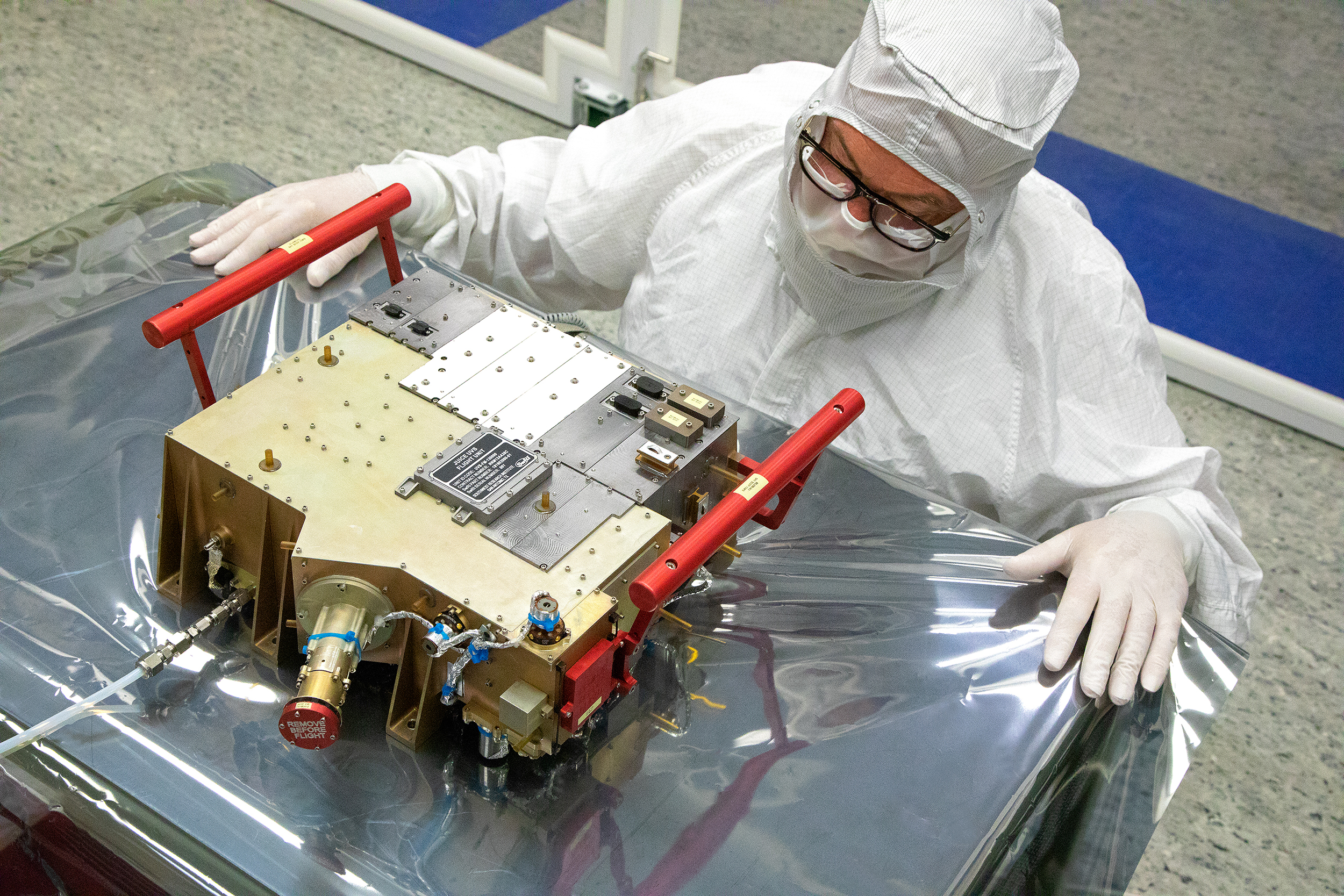Juice mission will explore Jupiter and its icy moons

An artist has created this picture of Juice exploring Jupiter and its moons. Copyright: Spacecraft: ESA/ATG medialab; Jupiter: NASA/ESA/J. Nichols (University of Leicester); Ganymede: NASA/JPL; Io: NASA/JPL/University of Arizona; Callisto and Europa: NASA/JPL/DLR
Jupiter is the largest planet in our Solar System and is remarkably different to our home planet, Earth. Jupiter is a gas giant and is orbited by a family of over 60 moons. To investigate these strange worlds, ESA are preparing to launch an exciting space probe called the JUpiter ICy moons Explorer, or Juice for short.
Blasting off in 2022, Juice will travel across our Solar System before arriving at Jupiter in 2029. The robotic probe will then spend at least three years investigating the gas giant and three of its largest moons: Ganymede, Callisto, and Europa. Scientists think that these icy moons have water oceans hidden beneath their surfaces. Water is one of the things that makes planet Earth so special, and is thought to be essential for life, so these moons will be fascinating worlds to study!

Juice has many high-tech scientific instruments, as well as large solar panels to provide power. Copyright: ESA/ATG medialab
Juice's main focus will be on Ganymede. It has several scientific objectives for this moon, and hopefully Callisto too:
- Learn more about the hidden oceans, and try to find underground reservoirs of water;
- Map the moons’ surfaces;
- Study what the moons are made from, all the way to their cores, and how this might have changed over time;
- Investigate the moons’ incredibly thin atmospheres (called exospheres).
In addition, Juice will study the magnetic fields of Ganymede and Jupiter, seeing how they interact. Ganymede is thought to be the only moon in the Solar System with its own magnetic field, and this lies within Jupiter’s very large magnetic field, giving rise to complex and fascinating interactions not seen anywhere else in the Solar System. The probe will also turn its attention to Europa, where it will study the chemistry that is essential to life, as well as examining cracks on the moon’s frozen surface, and strange geysers blasting water ice into space.

Scientists and engineers are currently hard at work finishing Juice ready for its launch in 2022. Copyright: SwRI
Mission scientists hope that Juice will also help us to make new discoveries about Jupiter itself. The probe will examine Jupiter’s ever-changing atmosphere, investigating regions that we know very little about. Juice's instruments will even measure wind-speeds in Jupiter’s middle atmosphere for the first time, as well as studying how energy is transported around the gas giant.
Exploring Jupiter and its icy moons is important because as well as being a major part of our Solar System, they will help us to learn more about worlds around other stars. Thousands of extrasolar planets have been discovered already, and there are countless more waiting to be found. Many of these distant worlds are gas giants like Jupiter. They are too far away to send space probes to investigate, but we can make good guesses as to what they are like by studying Jupiter. Perhaps the search for alien life should not just be focussed on planets like Earth, but also icy moons orbiting gas giants? JUICE will help us find out!
Cool fact: Always thinking ahead, ESA is already planning for future exploration of the outer Solar System. NASA and ESA have been studying a possible joint mission that would target the two ice giant planets: Uranus and Neptune!
Last modified 08 February 2021




